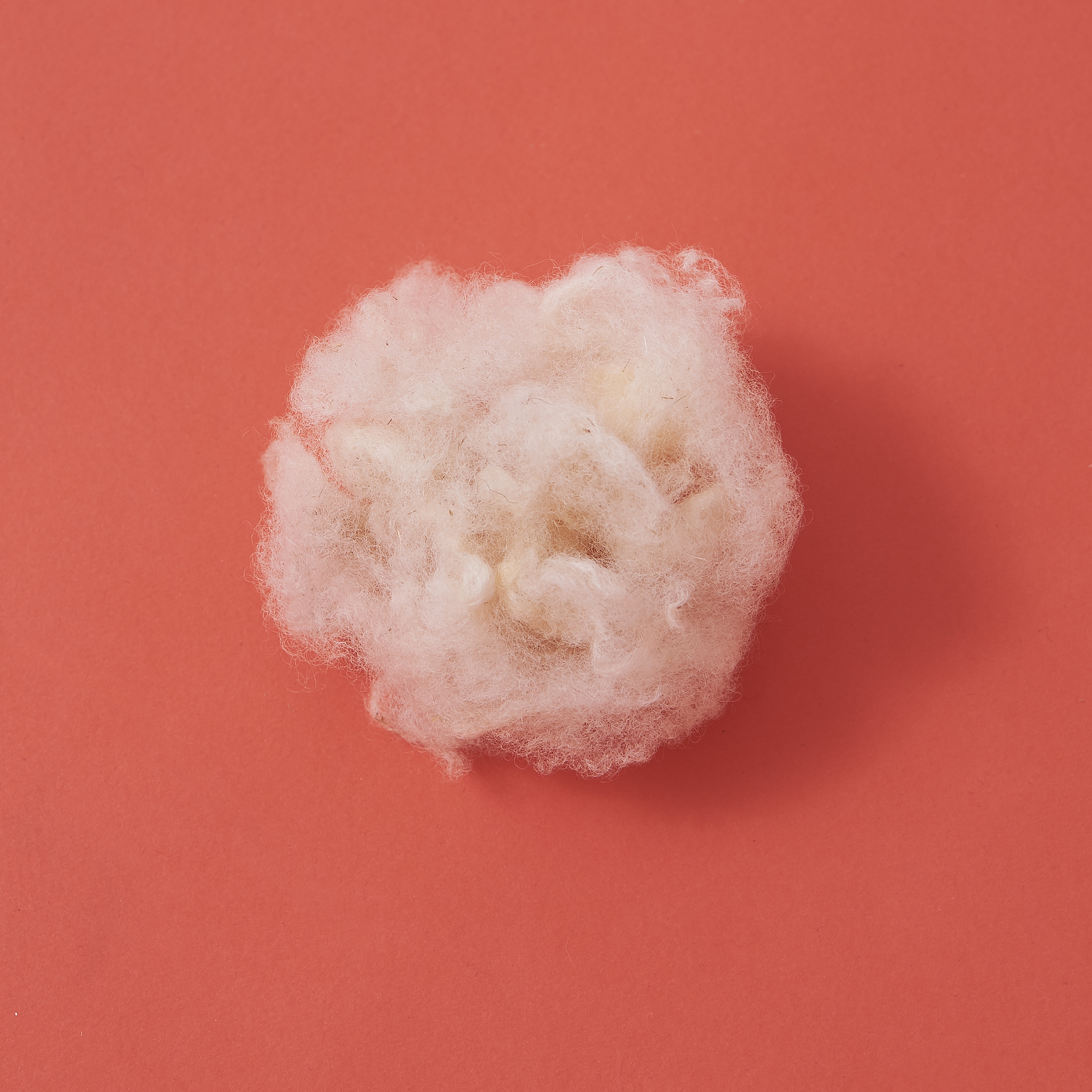The history of wool is very old, and it is said that the first woolen fabric was made around 2,200 BC. And the first sheep were bred in 6,000 B.C.
Merino wool, our signature material, is believed to have originated in the 1300s and was brought to Spain from Central Asia via Greece. There are as many as 20 different breeds of sheep, but merino sheep were considered valuable because of their soft wool. But is the reason why merino wool has been loved for so long simply because it is soft? Here, I would like to talk about its outstanding characteristics.
Insulating effect of crimps (warm in winter, cool in summer)
When talking about merino wool, its high moisture absorption and warmth retention properties cannot be overlooked. Merino wool garments made from merino sheep have low thermal conductivity, which stabilizes the temperature and humidity inside the garment, keeping it comfortable to wear. The crimps (fine folds) contain air and provide insulation between the outside air and the skin, keeping you warm in winter and cool in summer. You may have a preconceived notion that wool is a “winter material,” but the thin and lightweight fibers of merino wool also help prevent moisture and maintain breathability.
The surface of merino wool fibers is covered with scales similar to the cuticle in human hair. These scales quickly absorb perspiration and moisture through the gaps in the fibers, releasing the absorbed moisture as water vapor, while at the same time removing the heat of vaporization from the body, thereby lowering the body temperature to an appropriate level. Since the fiber itself is slightly wavy, it has the ability to contain a lot of air in the yarn itself, and the heat released from the body is taken into the fiber to keep it warm. For example, even after sweating profusely during a run, it prevents a sudden drop in body temperature and keeps the wearer dry and comfortable.
Cleanliness leads to sustainability
.
Odor resistance is another very important aspect of wearing merino wool. It is a material that absorbs moisture well, but somehow does not emit odor. Although the science behind how it traps odors within the fiber is still unknown, merino wool’s ability to eliminate odors and deodorize is far superior to that of nylon, polyester, and other fibers with deodorizing properties.
For example, if you wear it for a few days in your daily life, you will be surprised to find that you don’t notice any odor. It is useful for your travel wardrobe because you can reduce the number of times you have to wash it, and it is also sustainable.
When it comes to sportswear, odor can be a stressful factor.Merino wool also supports our brand’s concept of “comfort” through its anti-odor function.
A material that conveys the charm of nature and evokes rich emotions
Although I have told you about all the good things about merino wool, there are some things you should be aware of. Because it is an animal fiber, it is easily eaten by insects, and it is recommended that you use insect repellant when storing it. It also has a tendency to shrink, so a certain amount of care should be taken when washing it. It also absorbs water well and may feel heavy during exercise. Still, we make wool our first choice. Its soft texture conveys the charm of nature and gives us rich emotions, and there is no better material to keep our body and mind in good balance.


